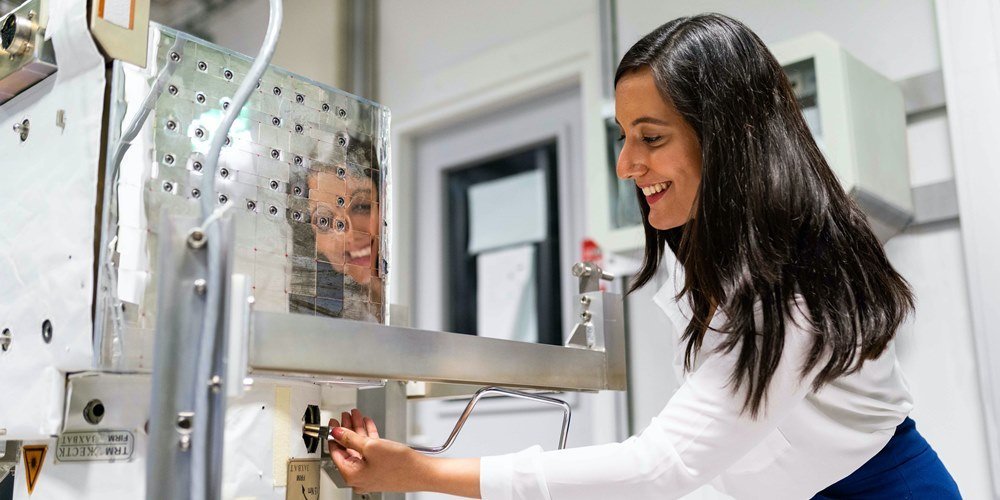The Impact of Natural Light on Laboratory Spaces

Natural light is often taken for granted in everyday settings, but it has a transformative effect when incorporated into laboratory spaces. Creatively leveraging natural lighting can create a more comfortable, productive and inspiring atmosphere while saving on energy costs.
Whether you are a scientist looking to maximize efficiency or a property owner considering the long-term functionality of the space, the impact of natural light in laboratories should not be overlooked.
From physical benefits to mental wellbeing, there are multiple reasons why tapping into nature’s glow can make for an innovative and lasting solution.
The Importance of Natural Light in Laboratory Spaces
The use of natural light in laboratory spaces is incredibly important when it comes to productivity and well-being. Studies have shown that having a naturally lit environment can improve alertness, mood, and cognitive performance, making it easier for laboratory workers to stay focused throughout the day.
Incorporating lighting can greatly reduce fatigue and stress levels, leading to happier and healthier employees. With the right light fixtures or techniques, like strategically placed windows or skylights, laboratory workers can optimize indoor lighting levels throughout the day while also cutting costs from electricity bills.
The Science Behind Natural Light
Natural light plays an important role in our day-to-day lives. Studies suggest that natural light has a positive impact on our mood, cognitive function, and sleep patterns. This is backed up by scientific research, which shows the potential for natural light to have a profound effect on our mental and physical health.
There have been numerous studies showing how natural light can improve alertness, reduce stress hormones and alleviate symptoms of Seasonal Affective Disorder. Natural light can also improve productivity by boosting mood, reducing fatigue and increasing concentration levels.

The Impact of Artificial Lighting
Artificial lighting has been used in laboratories to provide a consistent, reasonably precise level of luminance and the ability to accurately control it. Unfortunately, it can have a pronounced negative impact on the physical and mental health of laboratory workers. Common issues associated with artificial lighting are eye strain, fatigue, and decreased productivity, due to the natural body processes not being adjusted accordingly.
In comparison to natural light from the sun, which offers more precise spectral distributions during the day and natural diurnal cycles of light darkness and circadian rhythms that support natural body balance. It is important for laboratory managers to consider all potential impacts of lab lighting when choosing a light source in order to maximize worker productivity.
Designing for Natural Light
Introducing natural light into laboratory spaces requires careful consideration of the design strategies used. Skylights, windows, and light wells are common architecture elements used to provide natural illumination in the space.
To maximize daylighting potential, careful consideration needs to be taken when designing skylights and windows; orientation, size, and amount of windows should all be thought through.
Light wells are usually smaller openings such as tube shafts that allow natural light to reach lower levels of a building or a specific zone within a building.
Research Backs It Up
Scientific research has proven that natural light is essential for efficient mental and physical functioning.
A case study of successful laboratory spaces that incorporated natural light demonstrates its beneficial effects – notably with enhanced productivity and improved employee morale. As highlighted by the International Institute for Sustainable Laboratories (I2SL) research paper on natural lighting in labs, natural light has been far better than artificial lighting in terms of increasing comfort levels within lab spaces, as well as enabling workers to more effectively keep up with their schedules.
The natural increase in energy levels allows workers to genuinely enjoy their environment during the day, giving them an additional source of motivation when tackling tasks throughout the working hours.
Natural light has a transformative effect when incorporated into laboratory spaces, positively impacting both the physical and mental wellbeing of those who work within them. If you are looking for premier laboratory space that takes advantage of natural light, look no further than our state-of-the art facilities. Our commitment to creating an inspiring and productive environment will help take your research to the next level.




